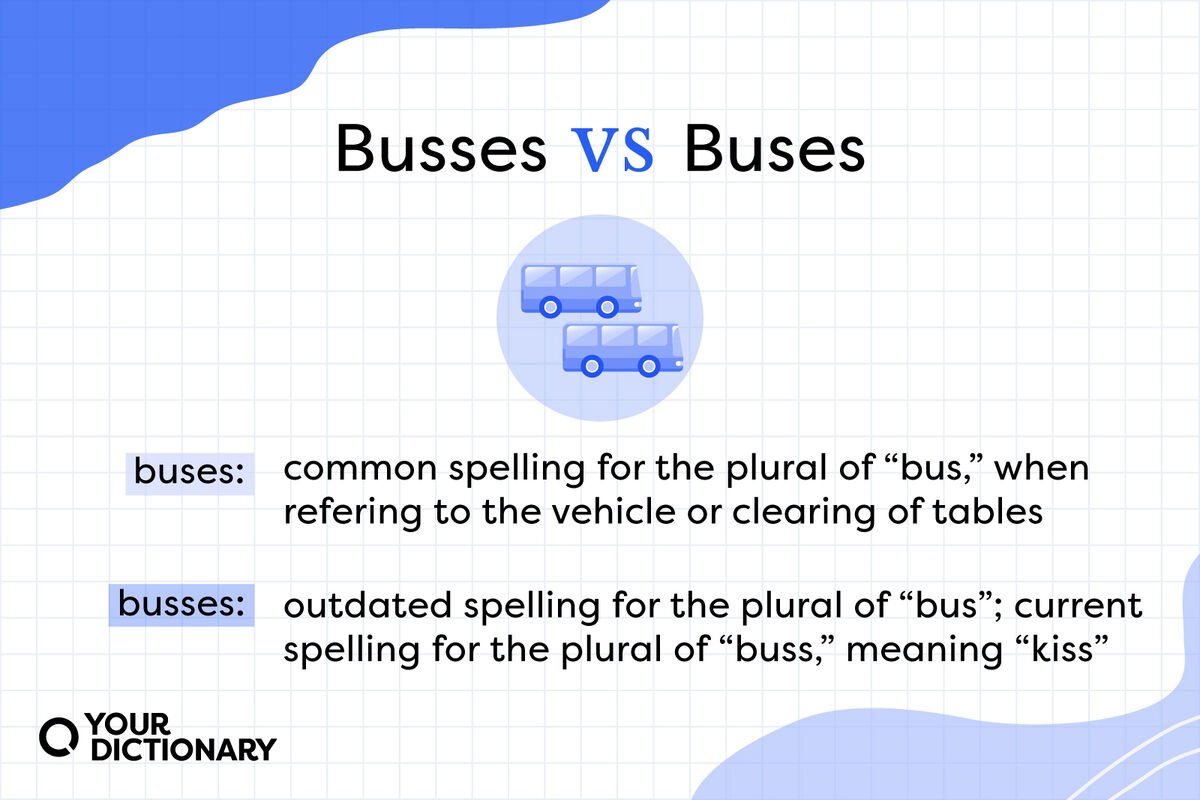What Is The Plural Of Bus: A Comprehensive Guide

The plural of “bus” is a topic that often sparks curiosity. Surprisingly, the answer is quite straightforward. When it comes to referring to more than one bus, the correct term is “buses.” This simple yet commonly debated linguistic issue has led to confusion among many English speakers. Let’s delve deeper into this intriguing linguistic phenomenon and explore why “buses” is the accepted plural form of “bus.”
Unlocking the Mystery: What is the Plural of Bus?
Introduction
Have you ever found yourself pondering over the question, “What is the plural of bus?” It’s a curious query that has puzzled many, but fear not, for we are here to unravel this linguistic mystery for you. Join us on a journey as we explore the fascinating world of plurals and discover the answer to this intriguing question.
The Singular and the Plural
Before we dive into the specifics of the plural form of “bus,” let’s first understand what singular and plural mean. When we talk about a single object, person, or thing, we use the singular form. For example, “a bus” refers to just one bus. Now, when we want to talk about more than one bus, we use the plural form. So, what happens when we want to talk about multiple buses?
Forming Plurals
Forming plurals in English is usually a straightforward process. For most nouns, we simply add an “s” at the end to indicate that there is more than one. For instance, “cat” becomes “cats,” and “dog” becomes “dogs.” However, there are some exceptions and irregularities that make the English language all the more interesting.
The Quirky Plural of “Bus”
Now, let’s address the burning question: what is the plural of “bus”? The word “bus” is a bit unique when it comes to forming its plural. In standard English usage, the plural of “bus” can be either “buses” or “busses.” That’s right, you have two options!
“Buses” vs. “Busses”
The most common plural form of “bus” is “buses.” This follows the regular rule of adding an “es” to form the plural of a noun ending in “s.” So, when in doubt, using “buses” is a safe bet.
On the other hand, “busses” is considered an acceptable variant, although less commonly used. The Oxford English Dictionary recognizes “busses” as a valid plural form of “bus,” but its usage is more old-fashioned and not as prevalent in modern English.
Historical Perspective
To understand the evolution of the plural forms of “bus,” it’s interesting to delve into the history of the word. The term “bus” originated from the Latin word “omnibus,” which means “for all.” In the early 19th century, “omnibus” was shortened to “bus,” and the rest is history.
The Rise of “Buses”
As the use of buses became more widespread and established in common language, the plural form “buses” gained popularity due to its simplicity and adherence to standard English pluralization rules. This gradual shift in usage led to “buses” becoming the dominant plural form of “bus.”
The Legacy of “Busses”
The alternative plural form “busses,” with its double “s,” harkens back to older forms of English pluralization. While less prevalent today, “busses” continues to be used in certain contexts, preserving a piece of linguistic history within the English language.
Regional Variations
It’s essential to note that language is dynamic and can vary across regions and dialects. In British English, “buses” is the preferred plural form of “bus,” aligning with standard modern usage. However, in American English, both “buses” and “busses” are considered acceptable, reflecting the flexibility and diversity of the language.
Global Perspectives
Beyond English-speaking countries, the plural of “bus” takes on different forms in various languages. For example, in Spanish, “autobús” becomes “autobuses” in the plural. Exploring plurals in different languages can provide valuable insights into the rich tapestry of linguistic diversity worldwide.
In conclusion, the plural of “bus” adds an intriguing twist to the world of plurals in the English language. Whether you opt for “buses” or “busses,” both forms have their place in the linguistic landscape, reflecting the complexity and versatility of English. So, next time you see a fleet of buses or busses rolling by, you’ll know that the answer to the age-old question, “What is the plural of bus?” isn’t so straightforward after all.
Next time when you are riding a bus or observing a row of buses, remember the plural of “bus” and appreciate the linguistic journey that brought us to this point. Embrace the diversity of language and the quirks that make English such a fascinating and ever-evolving means of communication. So, whether it’s “buses” or “busses,” the plural of “bus” proves that language is full of delightful surprises waiting to be discovered.
What is the plural of bus? #plural #english
Frequently Asked Questions
What is the plural of bus?
The plural of bus is “buses”.
How do you correctly pluralize the word bus?
To form the plural of bus, simply add “es” to the end of the word to make it “buses”.
Are there any alternate spellings for the plural of bus?
While some may mistakenly write “busses” as the plural of bus, the correct spelling is “buses”.
Final Thoughts
In conclusion, the plural of “bus” is not ‘busses’ as commonly thought, but ‘buses.’ Many English words follow similar rules when forming plurals. Remembering this simple guideline can help you communicate effectively and accurately. So, next time you’re discussing transportation, confidently use ‘buses’ instead of ‘busses.’ Keep in mind this small but important detail in your everyday language usage.





